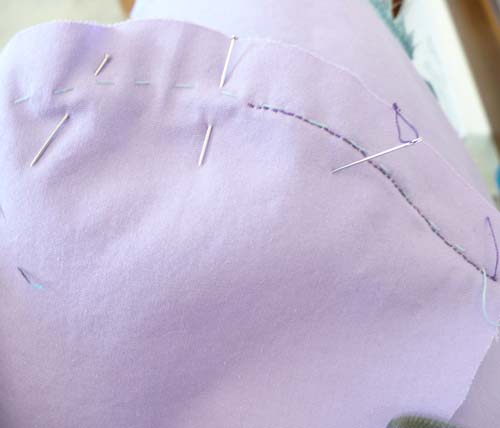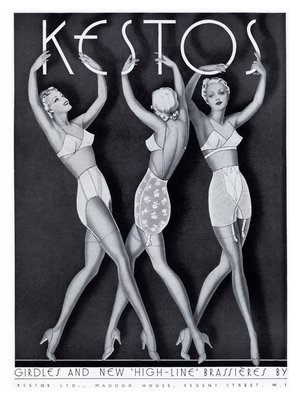Back to the Drawing Board
July 11th, 2012
After a night of solid stitching, much of it by hand (slip-stitched faux french seams, triple-basted and back-stitched bust cups), I was finally ready for the pre-strap and closure fitting of my experimental bodiced petticoat. With the center front pinned neatly together, I stood in front of the mirror and my heart sank. By the time I’d piped and bound the bust cup seams, they were nearly as bulky as an underwire. And it was quite clear that the front closure needed boning, possibly the side seams as well. There was no way the final result would even be as comfortable as a modern brassiere. Which defeats the whole point.

Back-stitching the bulky bust cup seam
So I went back to my books in search of another solution to the underwear problem. I’m aiming for a wardrobe of clothing based on styles popular from about 1900 to 1940. So it seemed logical to look for undergarments from those eras. Chemise with slash and gather bust shaping (I’ve seen one in an historic collection), bust bodice, bandeaux, and/or…

That’s right, a Kestos. Named for Aphrodite’s own support garment, the Kestos was the most popular brassiere of the 1930s. And it was originally designed with a pair of folded linen handkerchiefs connected by elastic and ribbons! What could be more comfortable? Or better suited to my free-form wardrobe?
I think I may also experiment with a few chemise configurations, given my obsession with the chemise form in general. It seems like a useful undergarment for many of the looser styles I have in mind. Petticoats will just have to be separate, which is perhaps more convenient for washing anyways.
